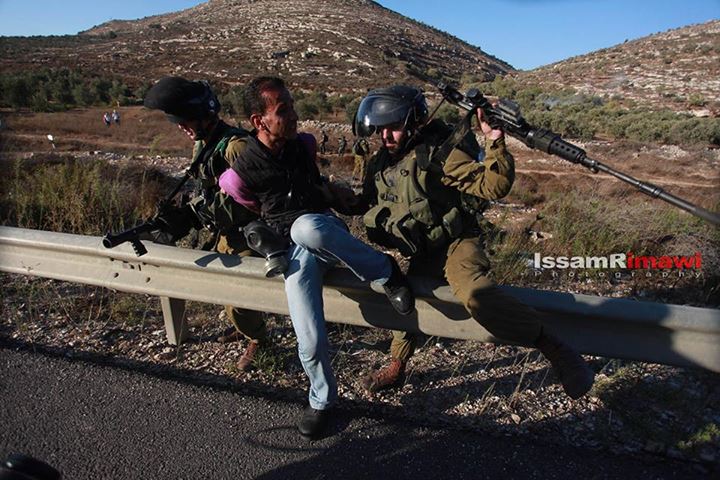Tag: Injury
-
Strong resistance in Kafr Qaddum despite Israeli army repression
13th September 2013 | International Solidarity Movement, Nablus Team | Kafr Qaddum, Occupied West Bank The residents of Kufr Qaddum held their weekly Friday demonstration despite increased repression by the Israeli army in the last two weeks. At approximately 10:00, more than 80 soldiers in nine military jeeps arrived in the village and positioned themselves…
-
Updated: Three Palestinian activists arrested during demonstration against road closure in Qaryut
10th September 2013 | International Solidarity Movement, Ramallah Team | Qaryut, Occupied West Bank Update 11th September: Abdallah Abu Rahmah was released at around 10pm last night. Bashar Qaryouti and Salah al-Khawaja have also been released. Bashar has needed medical attention after being beaten during his arrest. ******* Three Palestinian activists have been arrested today related…
-
Two people injured in Bil’in weekly march
26th July 2013 | Friends of Freedom and Justice | Bil’in, Occupied Palestine This afternoon the journalist Haitham al-Khatib 37 years old was hit by a tear gas canister in the back after being targeted by the Israeli soldiers, a 18 years old Mahmoud Samara also got injured by a rubber bullet in the leg,…

